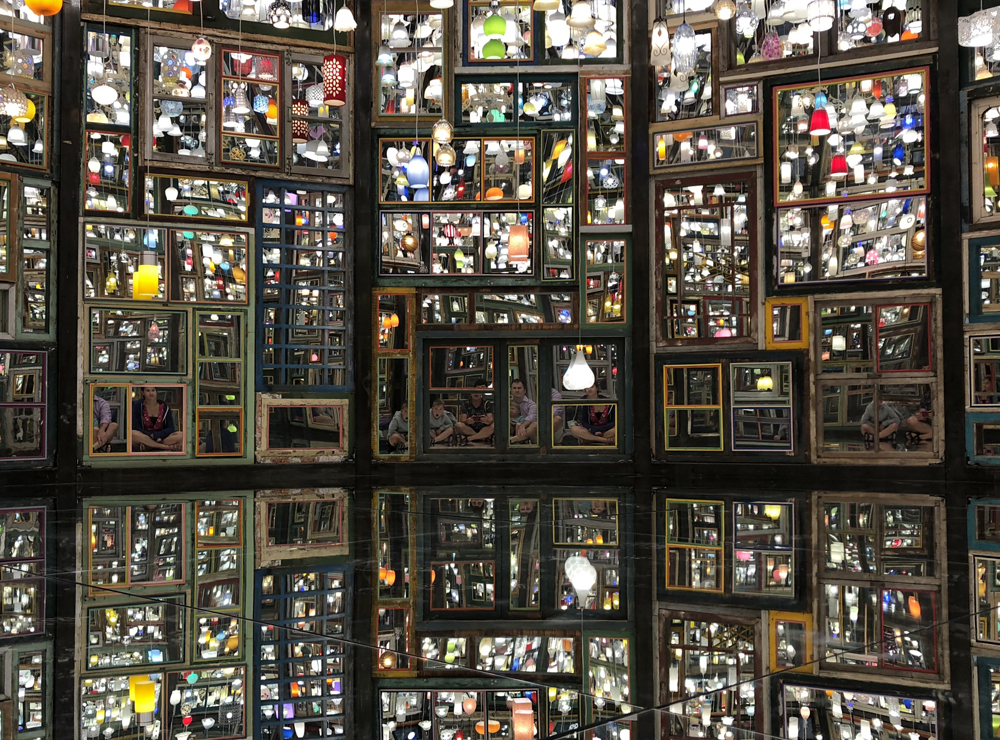
Is 5 years old too early to start parenting on the “search for stability and direction” in today’s culture and in ourselves? The curatorial essay for “Welcome to the Labryinth” at Marta Herford begins with “The loss of clarity is an omnipresent, existential concern in today’s society.” It goes on to question what kind of changes, guidance, or reflection is required to find the stability and direction in life. We went to see this exhibition of six large installation-like labyrinths in Germany. Throughout time and culture, labyrinths are both a source of guidance and entertainment. Likewise, these artworks are disorienting, active, and fun. We found places where you can lose yourself, discover unexpected structure, and gain new perspective.
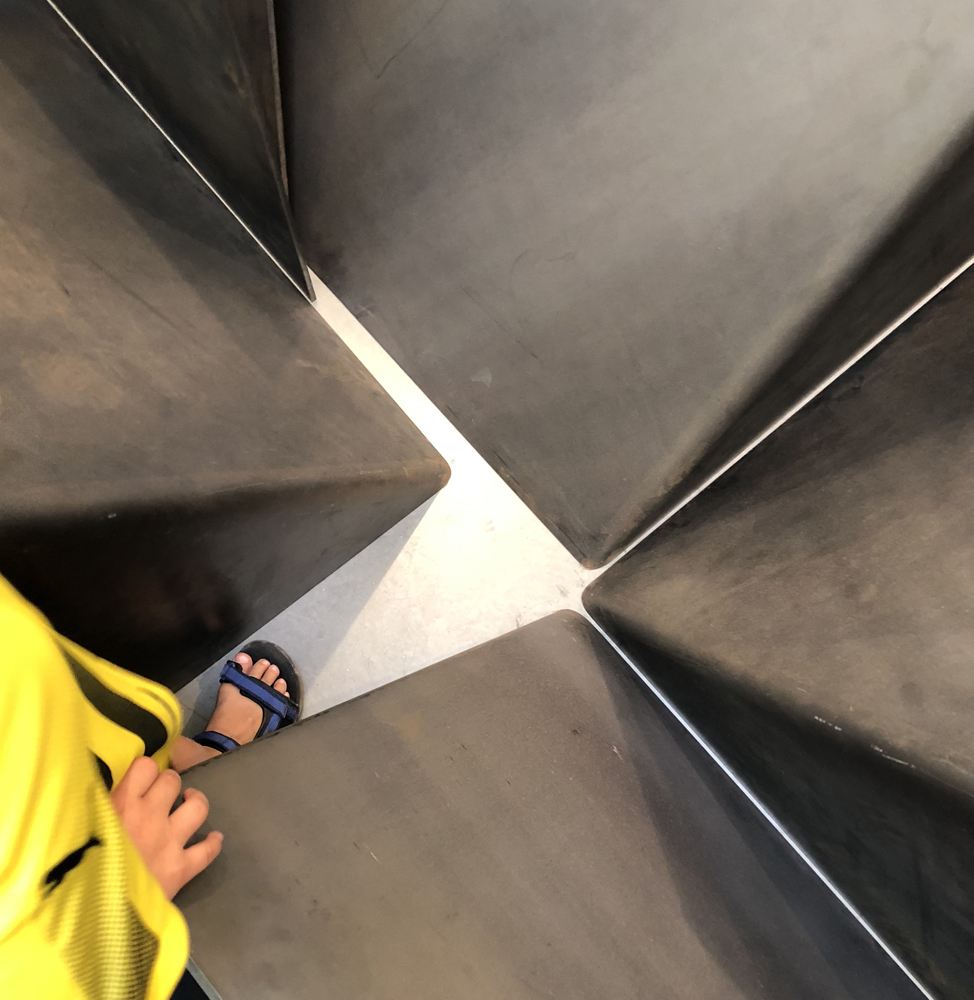
The six artworks in this exhibition are “Everywhere” by Song Dong, “Field Work” by Anne Hardy, “Nieteum” by Christian Odzuck, “Ohne Titel/Untitled” by Peter Kogler, “Stan and Ollie (primitive and derived Descriptions through Axes” by Royden Rabinowitch, and “Secret Passage” by Chiharu Shiota.
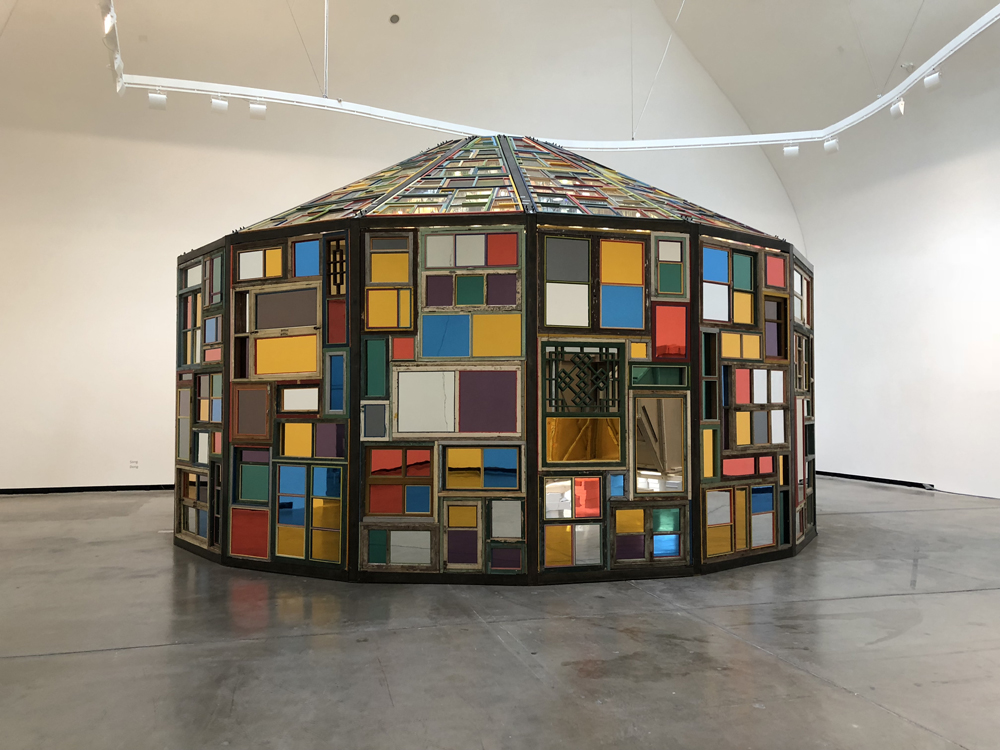

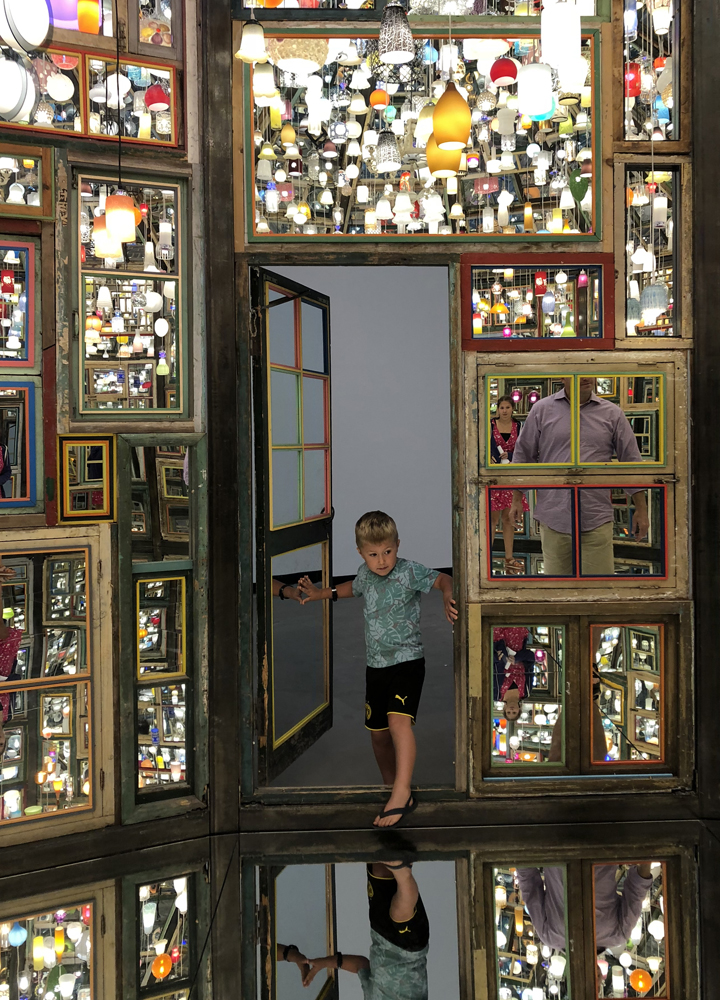
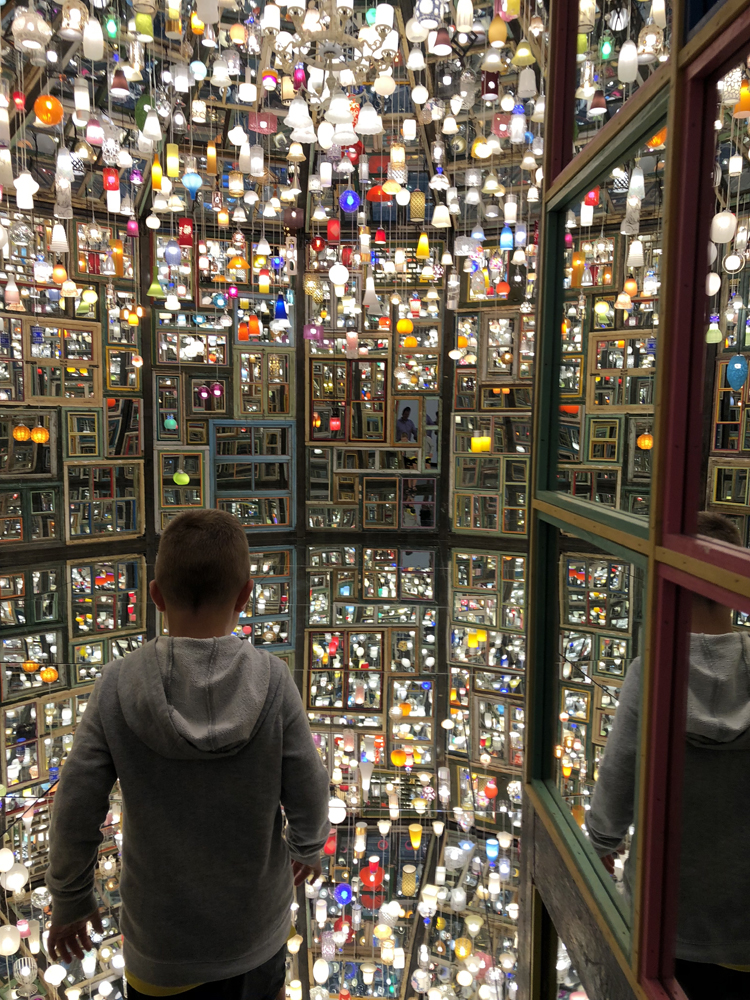
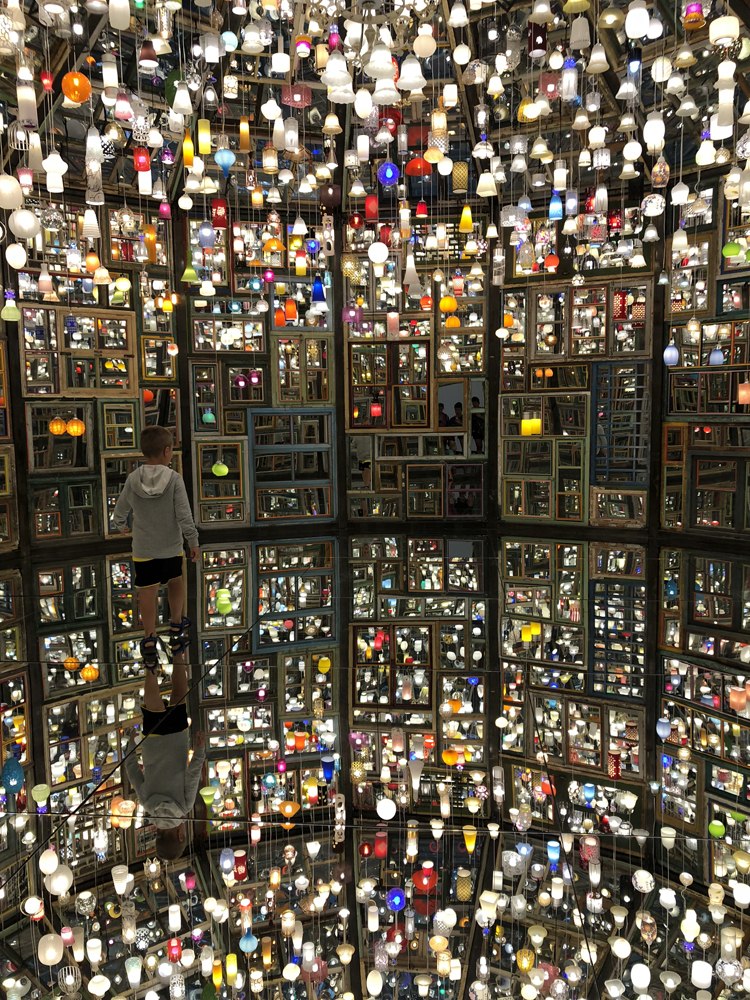
Have you ever looked at an art work and thought, “I have no idea how to access this.” That is literally how we felt about “Everywhere” by Song Dong until one child went missing. I was walking in circles around the installation and thinking I was missing something. I was ready to move on when we couldn’t find one of the children. He had found the secret entrance to “Everywhere.” We laughed when the gallery attendant showed the rest of us the concealed door. Opening the door, we froze in awe of the inside of this installation. On the outside, “Everywhere” seems impressive yet comprehensible. On the inside, you enter another world. A world that one child immediately questioned, “Is this stable?” This artwork is a magical place, where at least one of us chased away fear and found something new to ground his movement. With all the mirrors you can literally watch your mourning turn into dancing.
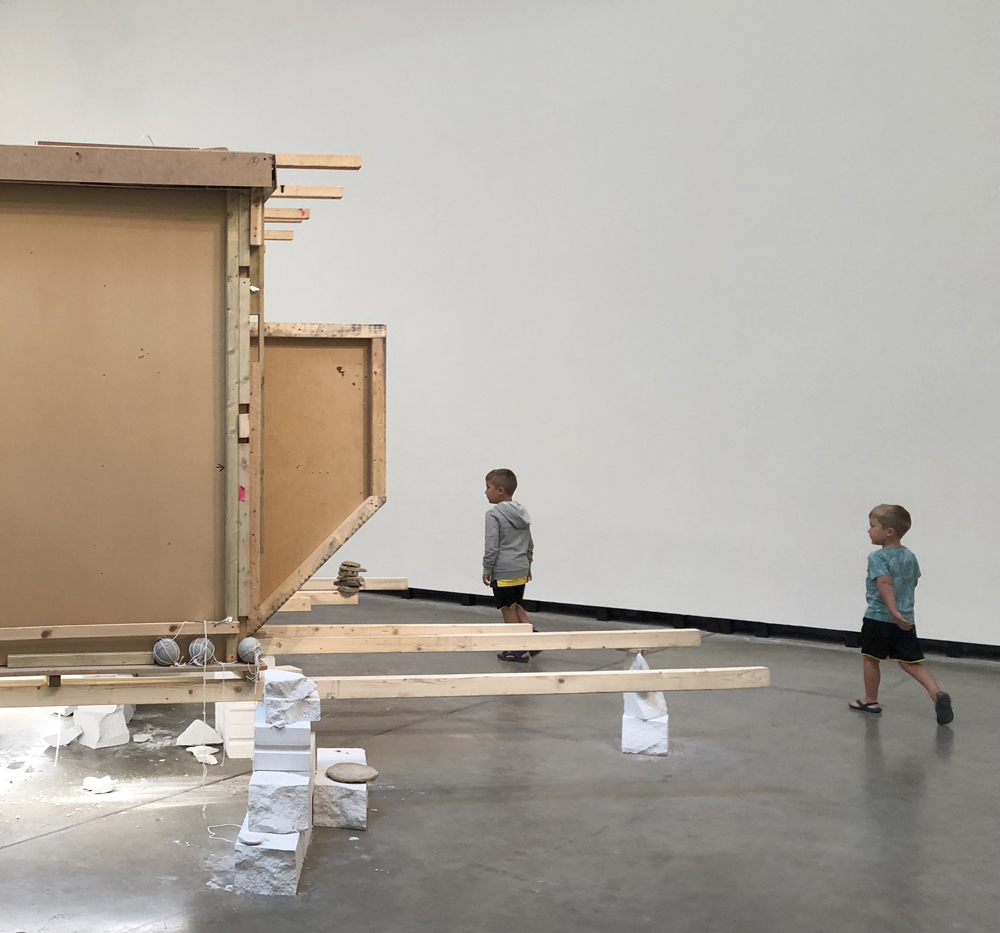

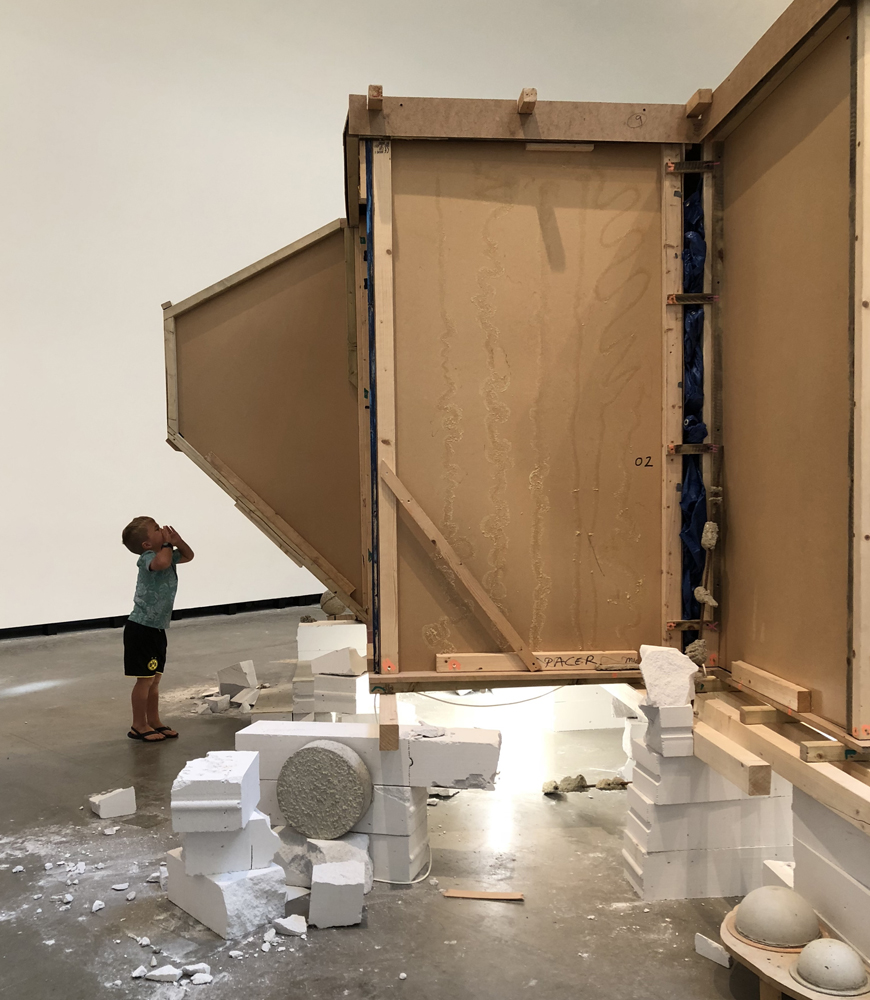
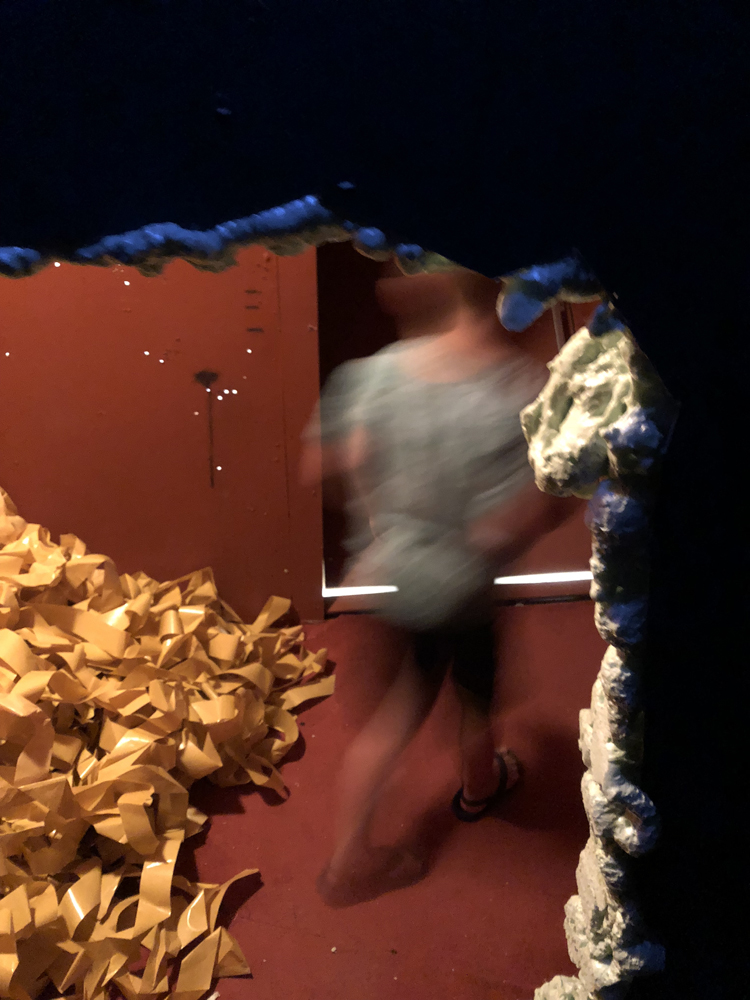
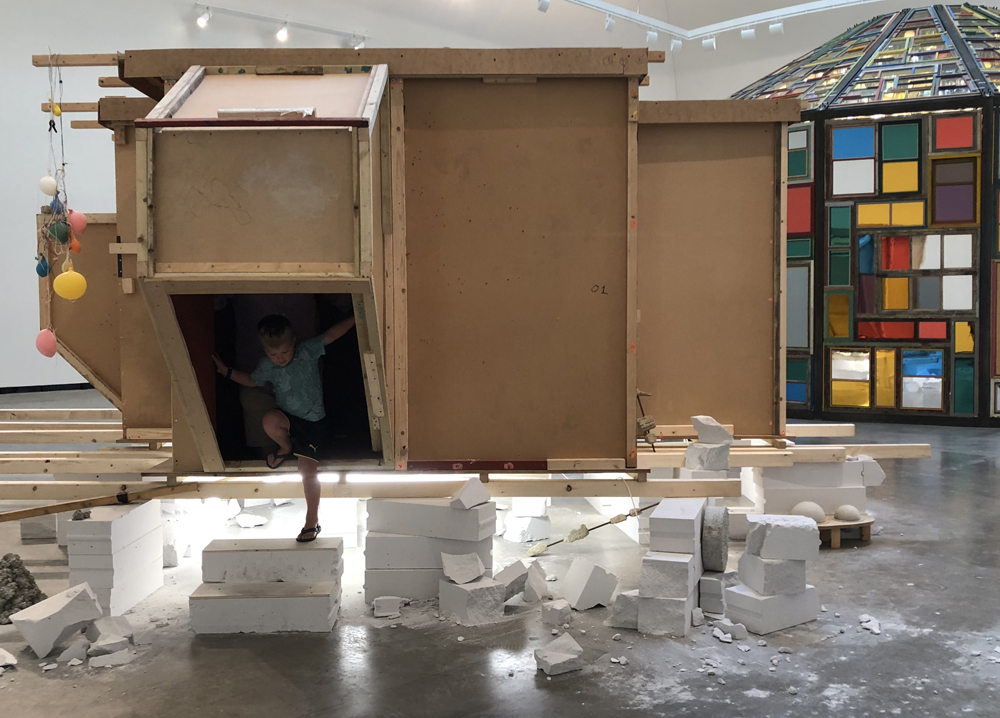
Anne Hardy’s installation “Field Work” has the same secret door problem as “Everywhere” by Song Dong. Once my children learned how to get in, they eagerly assisted other museum visitors who cautiously approached the suspicious large box. The inside is mysterious and dark. Only two people can be inside “Fieldwork” at a time, and our sons went through it at least 10 times. I went through once, but was more enthralled by the structure and implied process of the exterior. Towards the end of our visit, my middle child says, “I get it!” What he meant was that he was no longer scared of going inside it. He figured out that the sounds were from a speaker and the darkness did not go on forever. This discovery is the clearest memory he has of the artwork.
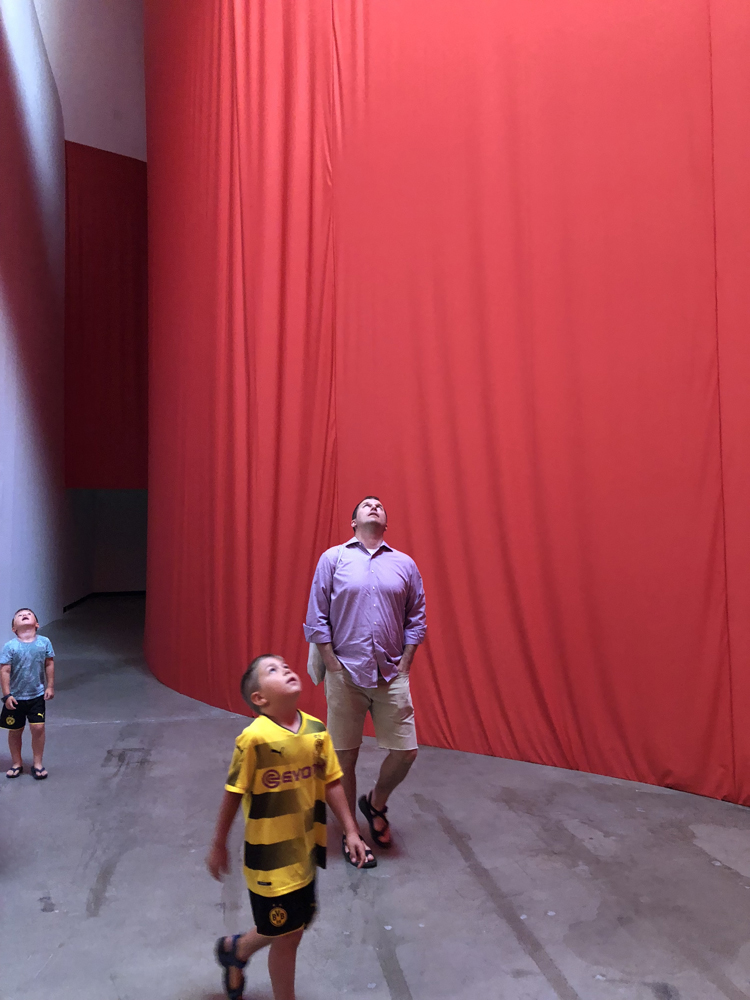
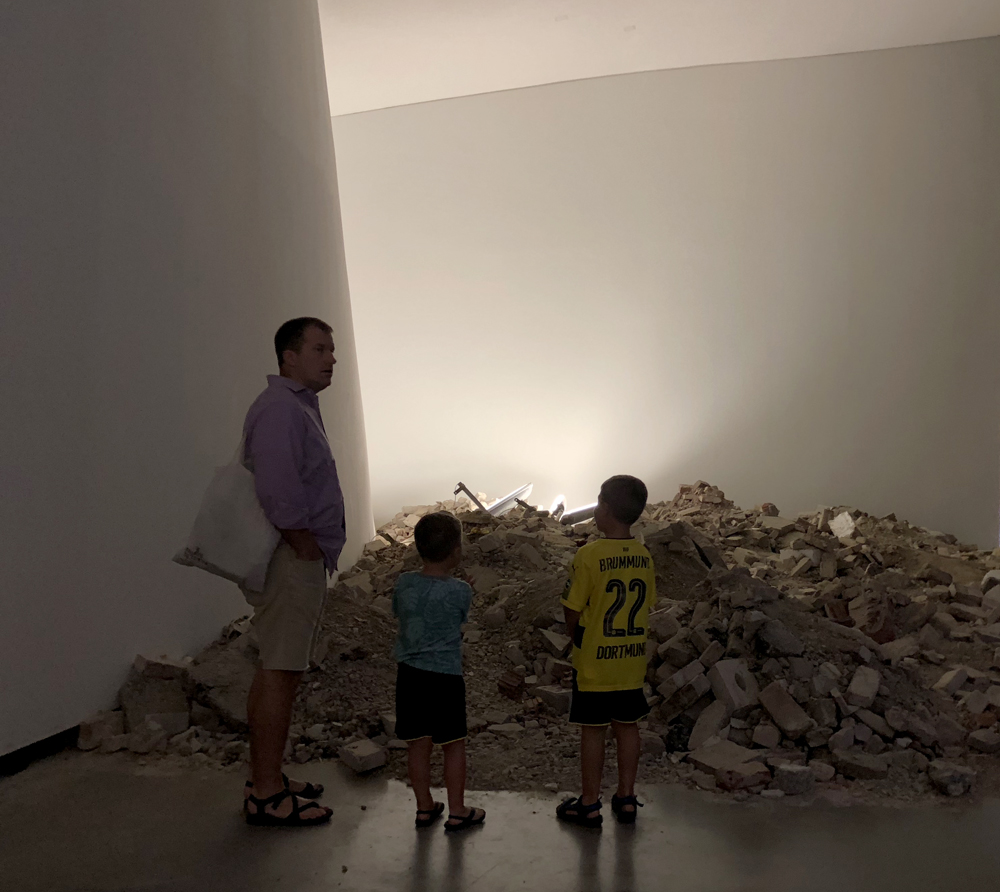
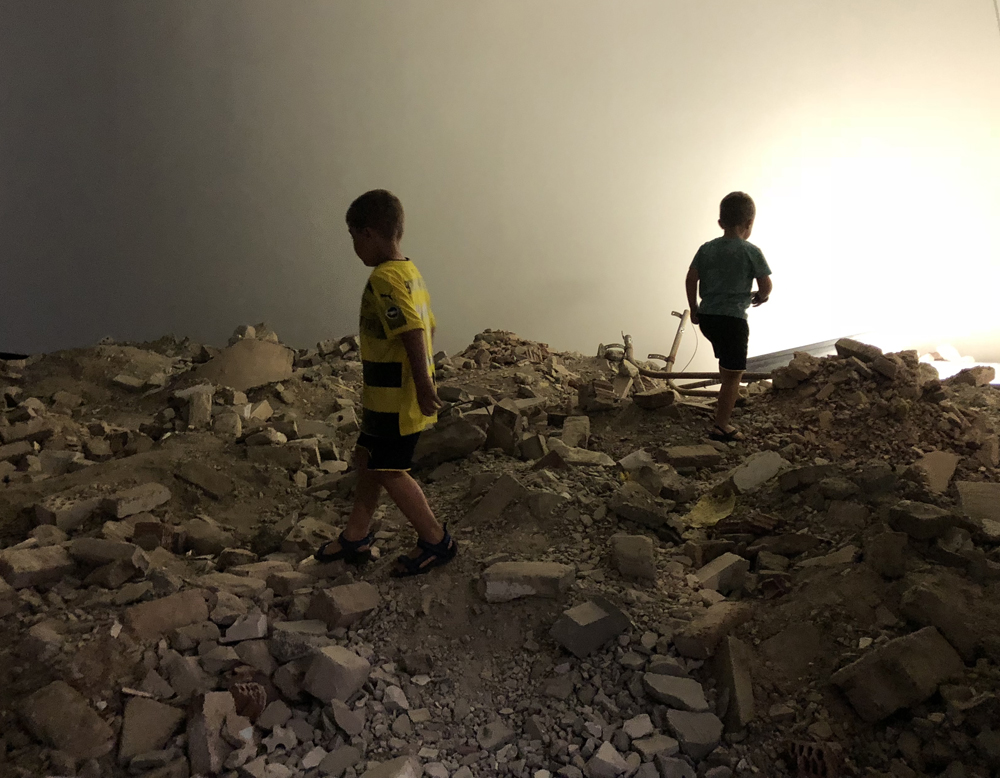
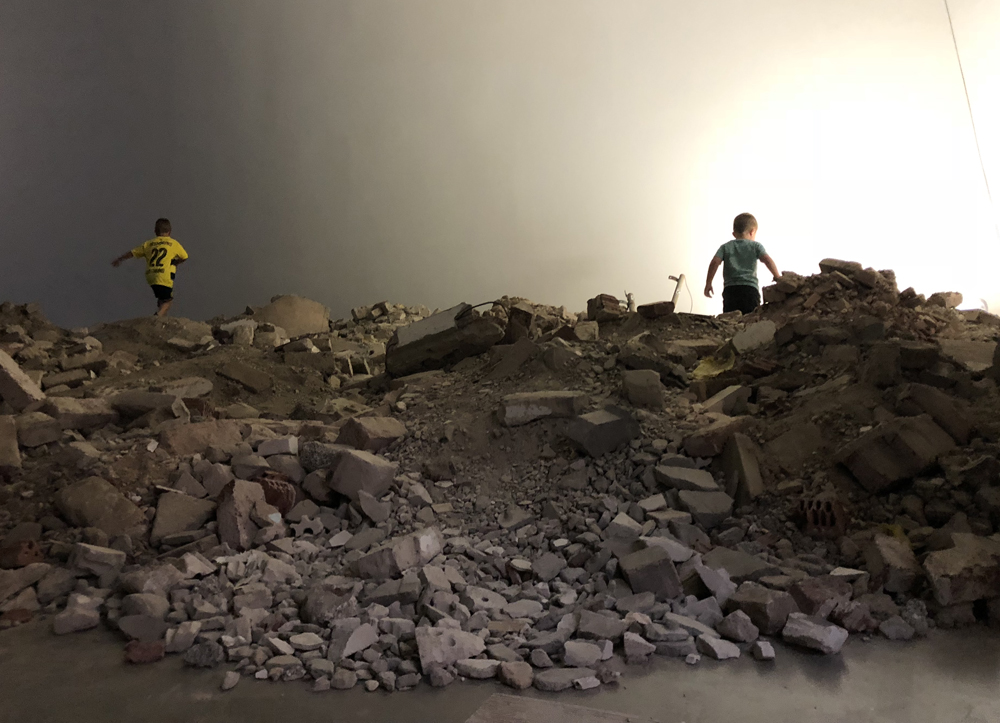
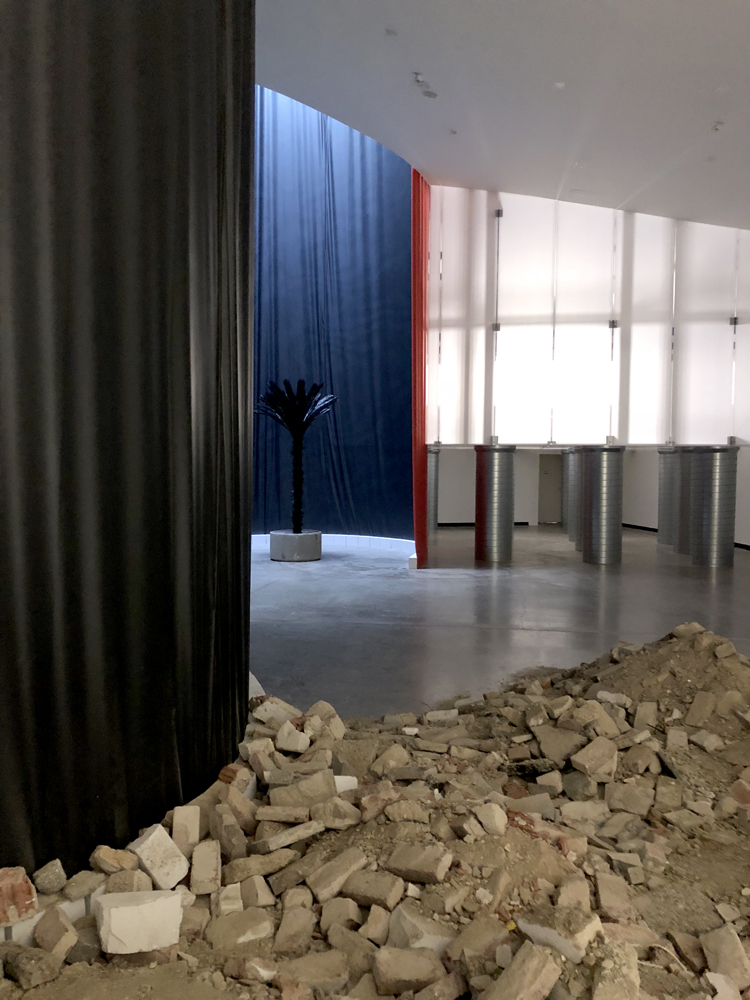
I was still staring at Christian Odzuck’s giant red curtain when I heard one of mine yell, “wow-e-wow,” from a few rooms over. After I rushed through the installation to get to the exclamation point, I confirm that he was genuinely impressed. During our visit, I didn’t hear anyone else say “wow!” and that is one reason I love to go to art museums with my children. If we are going to see art, then let’s love it.
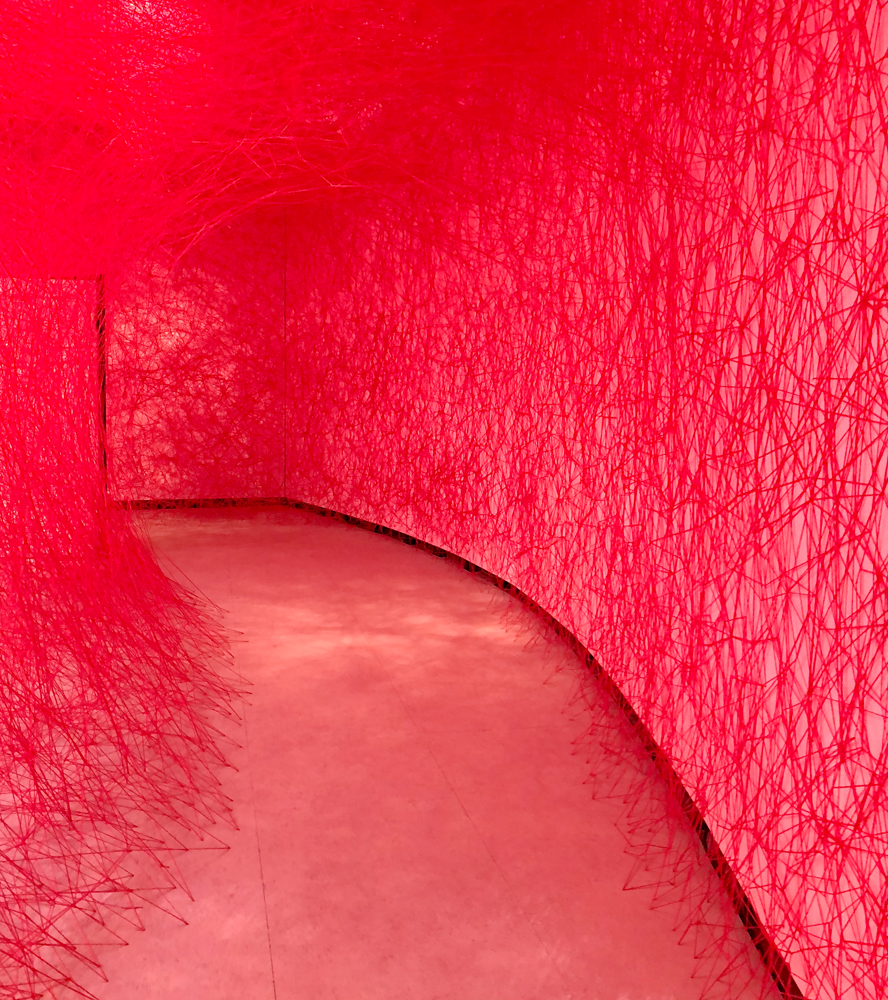
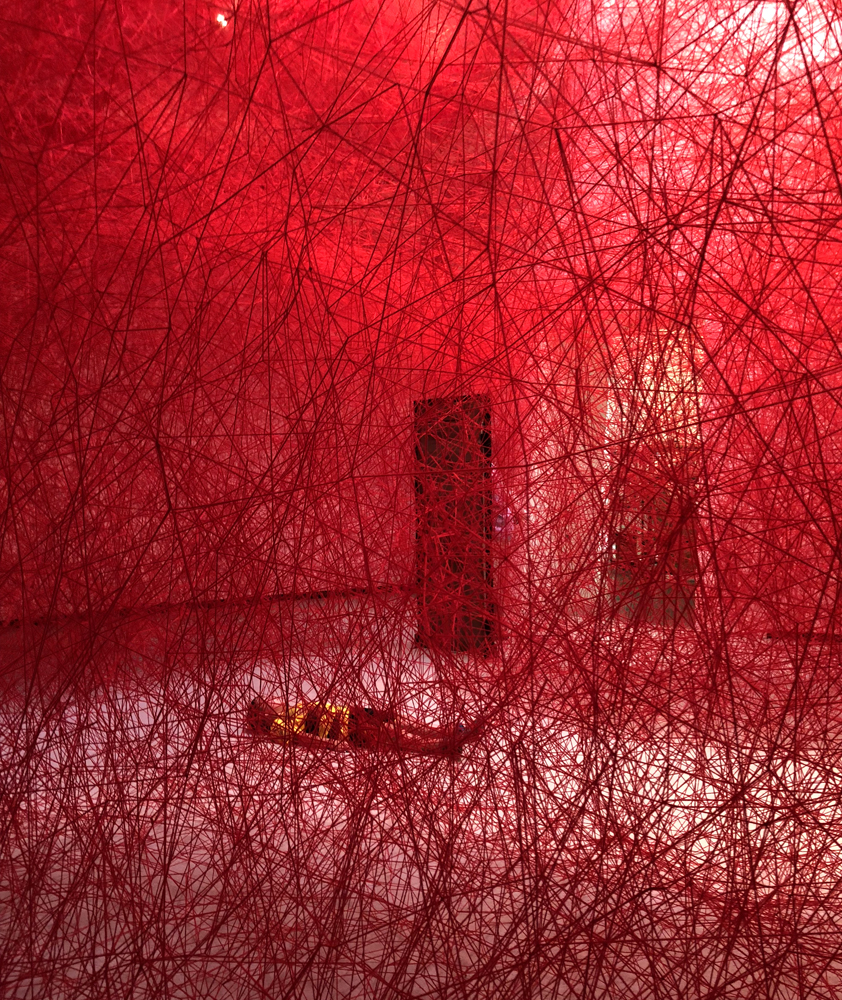

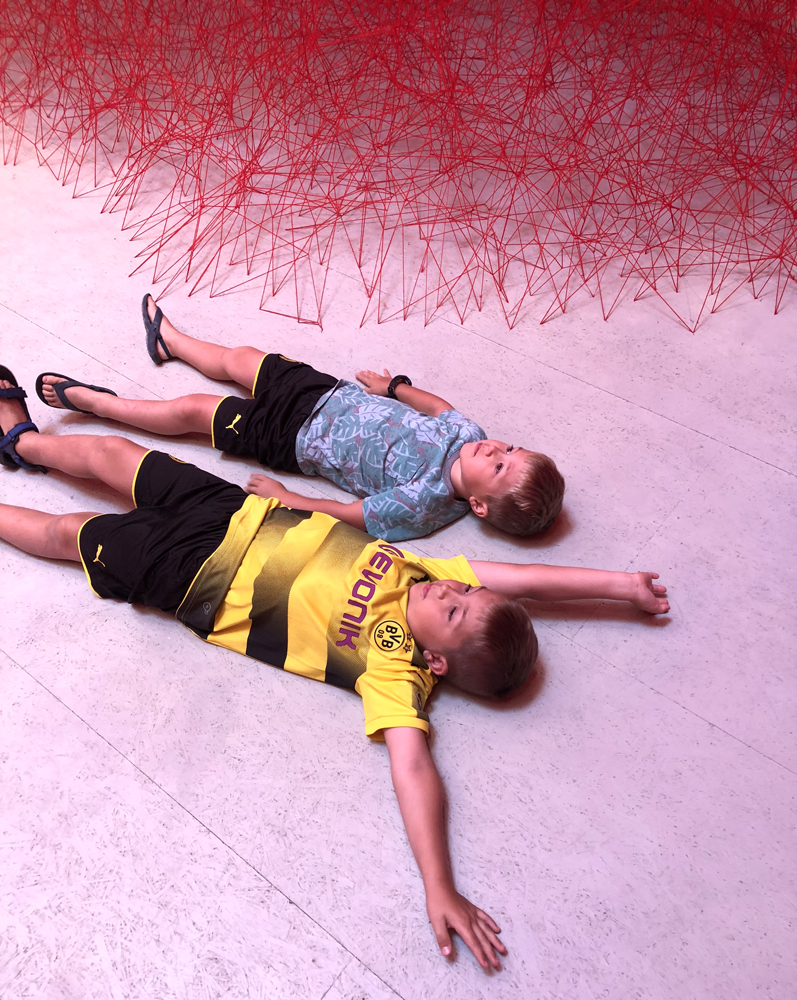
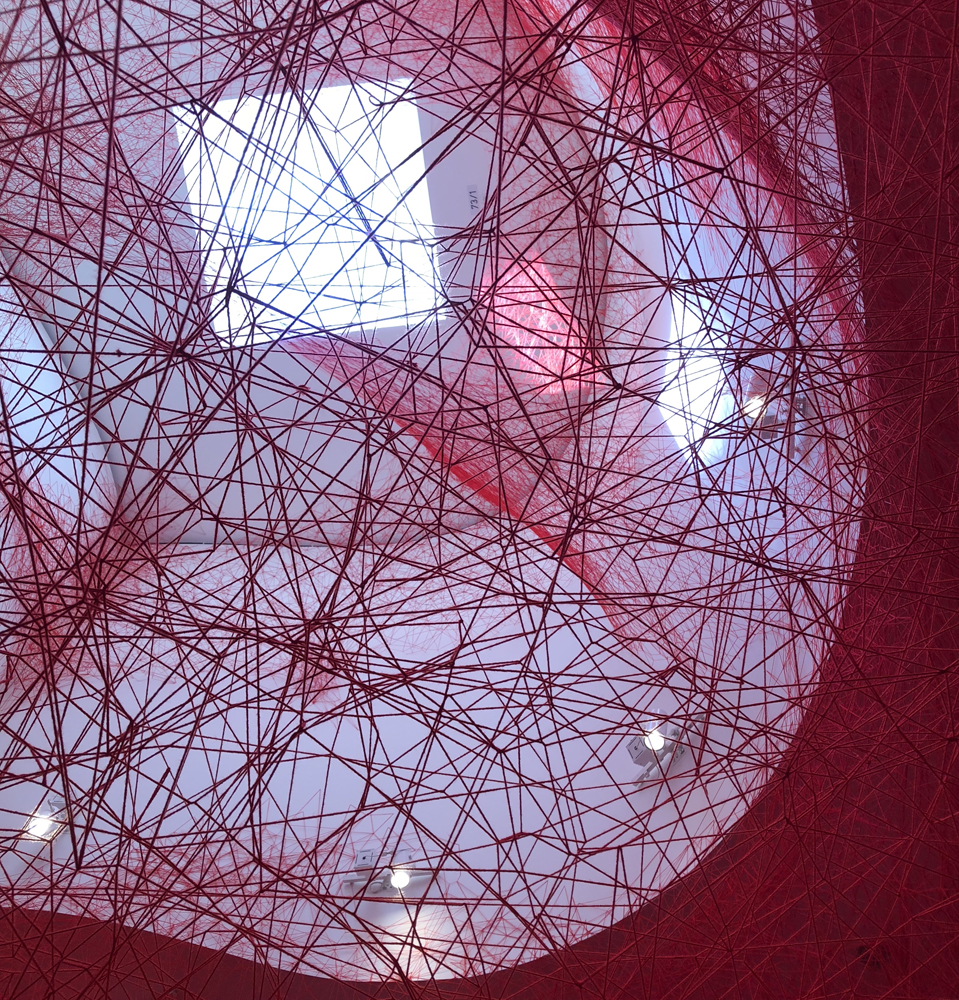
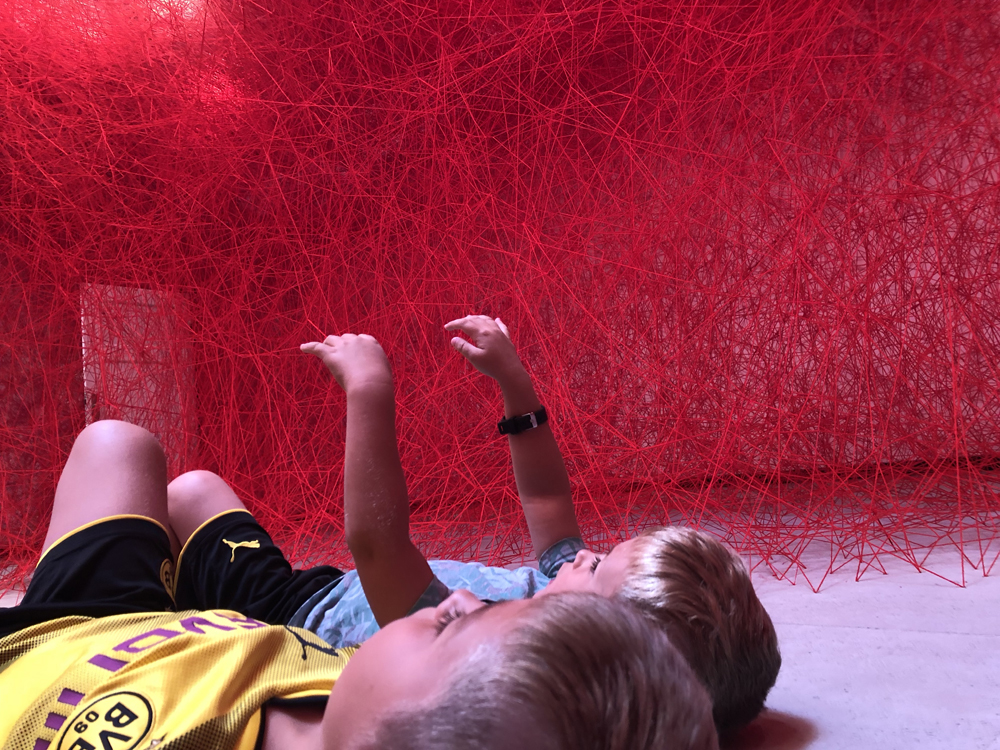
After navigating “Secret Passage” by Chiharu Shiota my children were getting a little out of control, so we laid down in the center of the labyrinth. I asked them what they thought about the artwork. Z-man said a lot of things and ended with, “…and then you save your life.”
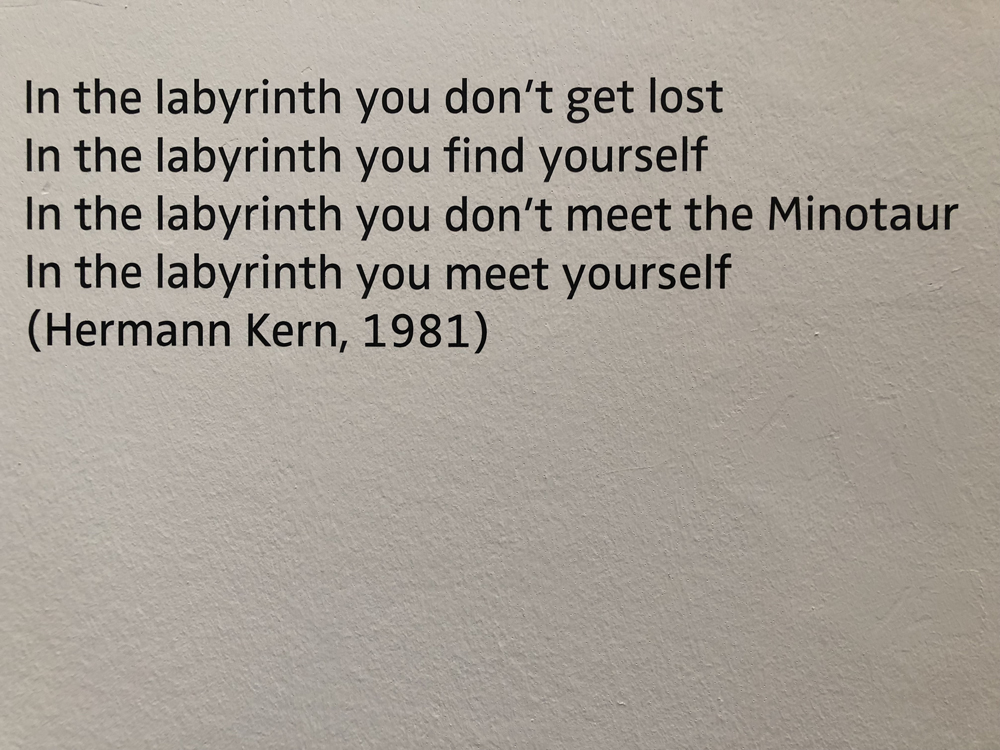
A labyrinth is a mental and physical experience where you journey along an orderly but uncertain path in order to better know where you are physically and spiritually. Walking a labyrinth is a metaphor for learning to navigate. Parenting is helping your children learn to navigate life with “clarity, stability, and direction.” I don’t know how to parent without contemporary art. It is one of the few places that enables me to develop my children’s ability to see the unseen but critical parts of living. Art doesn’t provide the answers, but it let’s us feel the problems and possibilities more deeply and beautifully.